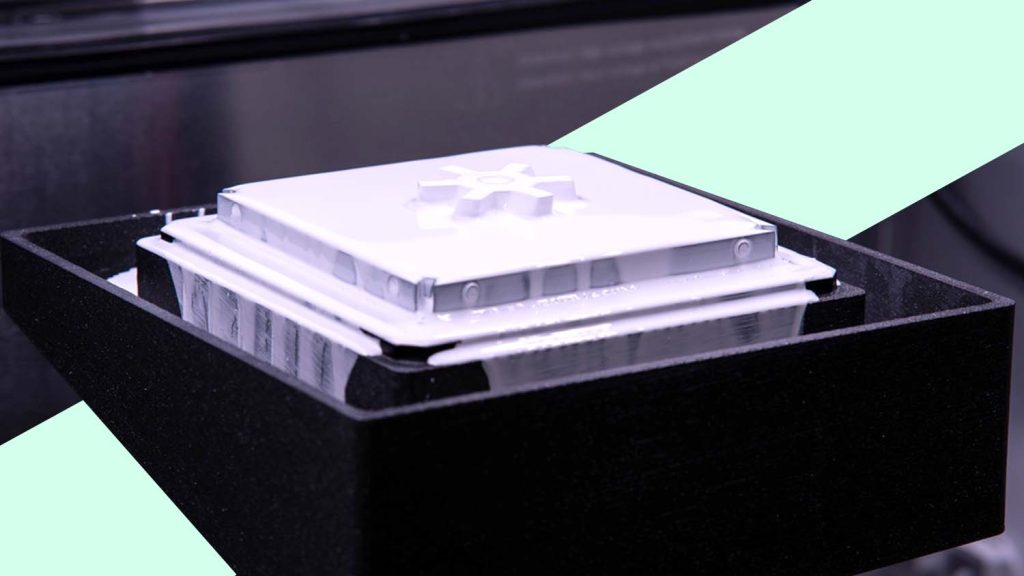 Lithoz has launched the new CeraMax Vario V900 3D printer, which uses Laser-Induced Slipcasting (LIS) technology for large ceramic parts with with thick walls and full densities.
Lithoz has launched the new CeraMax Vario V900 3D printer, which uses Laser-Induced Slipcasting (LIS) technology for large ceramic parts with with thick walls and full densities.
LIS technology uses water-based slurries of oxide and non-oxide ceramics that can completely absorb the laser beam, making is able to process dark ceramics such as silicon carbide.
Silicon carbide is one of the most sought-after technical ceramics for both mechanical properties and width of possible applications, is notoriously difficult to process via any additive manufacturing technology that involves the use of light for curing of slurry materials.
The CeraMax Vario V900 can apply up to 1.000 μm slurry per layer in less than a minute, within a build envelope of up to 250 x 250 x 290 mm, while the LIS technology enables 3D printing using industrial water-based suspensions with very low organic binder contents.
Lithoz says the green parts that come off the 3D printer are machinable ‘without any restrictions’, allowing them to be easily reintroduced into the traditional ceramic process chain.
The CeraMax Vario range uses database-supported storage and management of all process data, helping produce and record documentation of print jobs. Optional software upgrades will be available, to help with better parameter control or adjustment, as well as the structuring of production data and the possibility of real-time process monitoring via remote video transmission.
The new model and technology adds to Lithoz’s existing Lithography-based Ceramic Manufacturing technology, which it says will remain its recommended choice for building complex structures, ultra-precise details or thin walls. LIS, it says, fills another important market area and will take on the role of 3D printing larger ceramic parts while still maintaining all desired ceramic properties.






